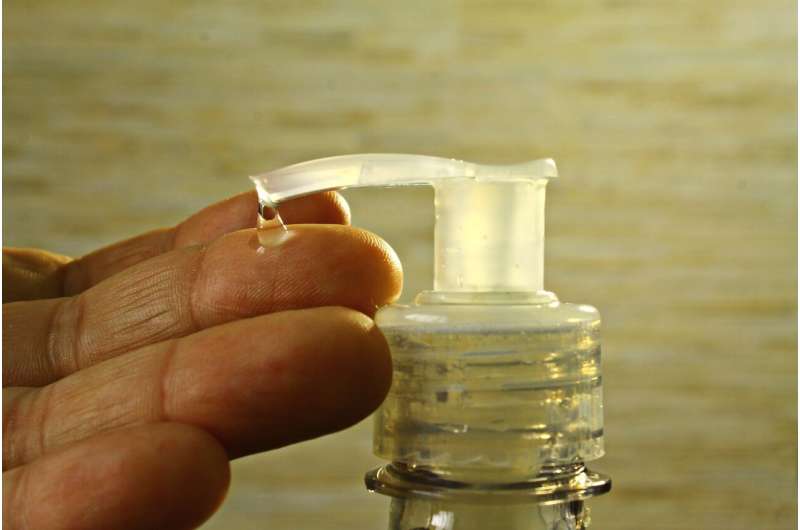Credit: CC0 Public Domain
In the face of a persistent global pandemic, disinfectants are more important than ever. These products sometimes rely on quaternary ammonium compounds, or "quats," to kill bacteria and viruses on surfaces. However, some scientists have started to examine these compounds for their possible toxicity in cells and animals. A new story in Chemical & Engineering News, the weekly newsmagazine of the American Chemical Society, explores the safety of quat-containing disinfectants.
Quats are a family of several hundred compounds that have at least one positively charged nitrogen atom, typically linked to four alkyl or benzyl groups. These compounds kill bacteria and viruses by disrupting the structures of proteins and lipid membranes, writes special correspondent Xiaozhi Lim. Quats have been in use since the 1930s, and today they can be found in disinfecting sprays and wipes, hand soaps and hand sanitizers. They're also used as preservatives in eye drops and as surfactants in shampoo.
In recent years, concerns have mounted regarding potential toxicity of quats. In animal and cell experiments, scientists have found links between the compounds and fertility and developmental problems, as well as disruption of other cellular processes. However, industry experts are skeptical about health risks in humans, as test doses given to animals in studies far exceed typical exposures in people. Some experts say that skin irritation is the biggest concern with the disinfectants, and that only a small amount of the compounds are actually absorbed by the body. The COVID-19 pandemic has provided a unique opportunity to further explore quat safety, according to researchers.
More information: "Do we know enough about the safety of quat disinfectants?," cen.acs.org/safety/consumer-sa … disinfectants/98/i30
Provided by American Chemical Society























